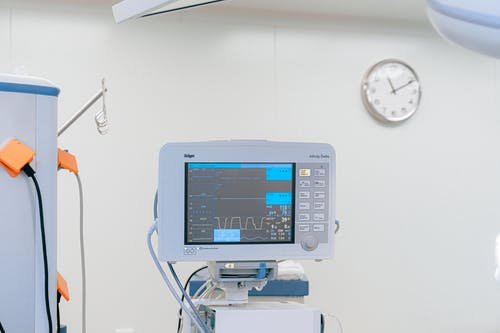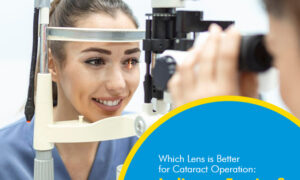
Introduction
Operations are done as a corrective measure for issues that cannot be rectified through medicinal aid within the human body. There are different operations and there are different ways for carrying them out depending on the urgency and the severity of the problem.
Going under the knife is an uncomfortable and otherwise scary thought that patients usually try to avoid at all costs. Operations pertaining to the heart and its health is an even scarier idea to fathom as it poses a huge risk to the human body and health. With the advancement in technology, the field of cardiology has significantly improved and paved paths that would allow patients to get corrective surgeries without the pain and though of going under the knife.
Professionals like Dr. Asim Hameedi are qualified in interventional cardiology. This is a completely new division in this field which has given a new outlook to the entire process. Professionals and even patients now prefer this new way of intervention to cater to all problems pertaining to cardiovascular health.
Such operations are important for the health of the patient but the postoperative care is the most important part. If the operation goes well but the care done after the operation is what plays the role of the deciding factor in how the results of the operation appear. There are proper steps that need to be followed to ensure that enough care is given to the patient and they make the right choices so that their health is not affected. The recovery phase is the most crucial in the entire process of a noninvasive surgery.
What Is Interventional Cardiology?
The entire field of interventional cardiology is based on techniques that involve the catheter and its movement around the human body.
Surgeries relating to the human heart are especially dangerous because of the sensitivity and the threat that can be imposed when such a surgery is being carried out. It is important that the patient is made aware of the complications that could follow after a cardiac surgery which is often what scares the patients. Having anxiety is a common theme among such patients. But this has all changed now.
Interventional cardiology has made the task of the doctors easier and much safer. Professional interventional cardiologists like Dr. Asim Hameedi make the use of catheters to deal with the issue pertaining to the heart. The catheter is usually entered from either the arm of the leg. Then, through the natural channels and pathways present in the body, the doctor navigates his or her way through the body to reach the heart. Once there, they carry out the procedure that is required to allow the patient to live a better sustainable life.
Another name of interventional cardiology is noninvasive cardiology which, literally, means that there is no invasion involved in the entire process.
There is a rapid rise in this area within the field of cardiology to cater to the issues of patients with a noninvasive method so that they would not have to go under the knife when it could have been avoided.
The Importance of Interventional/Noninvasive Cardiology
For America every year, it has been estimated that a total of 600,000 adults die due to heart diseases. Such an alarming figure compels one to think of all the ways this problem could be stopped from getting out of hand. This is why it is important that early detection is introduced into the society and people are made aware of the importance of getting the right attention. This would not only improve the quality of life but would also help with the longevity of it.
Interventional cardiology, at times, plays the role of a detector as well. Interventional cardiologists use their skills and expertise to detect problems within the hearts of their patients. The most common cause of heart diseases are clogged/blocked arteries which could potentially be fatal if not treated on time. Interventional cardiology can detect such an issue. Once the doctor is through with the process and has analyzed the results, they could then make an informed decision regarding the route of treatment (and/or operation) they wish to take on for their patient.
After a timely diagnosis, there is a huge chance that the problem can be treated through noninvasive cardiology which would make the task easier for the doctor and reduce the risk factor involved in the entire situation. It eases out the anxiety of the patient as well which keep their blood pressure levels stable and perfectly balanced.
Catherization is what makes up the field of noninvasive cardiology. Catherization means to use a catheter (a thin flexible tube) to insert the human body and reach the heart. It is a comfortable process with little to no side effects which is what makes this form of cardiology really famous. Now, doctors as well as patients gravitate towards such processes.
What Is the Difference Between a Cardiac Surgeon and An Interventional Cardiologist?
Academically, both the types of doctors study the heart, its diseases, and its treatments. There field is the same and they cater to similar problems. The only difference is that they deal with the issues differently.
A cardiac surgeon has the duty of performing surgeries such as bypass surgeries by opening the chest of the patient. This adds the factor of risk in entire equation as it is a huge risk for a patient to be having an open-heart surgery like that. Despite the doctors being professionals with loads of experience up their sleeves, there still is a huge chance of a tiny hiccup occurring which could further deteriorate the whole issue.
An interventional cardiologist, on the other hand, gains proficiency in dealing with cardiovascular issues through the art of using catheters within the body. There are different procedures that can be performed with the help of interventional cardiology and noninvasive cardiology. The most important advantage in this field of cardiology is that people do not have to go through a ton of pain to get their issue dealt with. There are a lot of procedures that can now be done through interventional cardiology and as this field is being explored, more and more methods are going to come to light which may help in changing the field of cardiology perpetually.
There is. Common misconception about the kind of doctors’ interventional cardiologists are, as they are not considered as professional as a cardiac surgeon is. The fact of the matter is that both kinds of cardiac doctors are licensed professionals who have degrees, knowledge, and experience within their defined field.
Different Procedures Within the Field of Interventional Cardiology
There are different procedures that can be carried out through the field of interventional cardiology. Since this field is still being explored, it is expected that new pathways would also be explored in the future so other issues can be dealt with as well through the field of interventional cardiology.
So far, the procedures that can be done through the help of interventional cardiology are:
- Angioplasty: angioplasty and stenting is done in case of a blocked artery. When the doctor is able to identify a blocked artery within their patient, they have to carry out an angioplasty. The process begins by the doctor inserting a thin tube through the leg of the arm of the patient. They reach the heart with the help of this catheter and then the doctor goes on to inflate a balloon once they identify the artery that needs to be opened. This balloon removes any blockage from the artery which resumes the blood supply the goes to and from the heart.
- Atherectomy: atherectomy is a noninvasive procedures which makes the use of tiny blades that help the doctor in removing any plaque that has deposited in the vessels of the patient.
- Protection (Embolic): embolic protection is needed when doctors try to ensure that the plaque deposits that are removed from the blood vessel does not break off in the blood stream. This is done especially in a situation where the carotid artery is involved or when a bypass is done.
- Stenting (Carotid): a carotid artery basically refers to the artery that is present in the brain. It so often happens that the carotid artery (the one that takes the blood towards the brain) gets blocked which puts the body in stress. There is a huge risk involved if the brain stops receiving blood supply which could be fatal in most cases. Interventional cardiology also covers this aspect.
- Percutaneous mitral valve repair: this procedure is carried out when a valve is found to be malfunctioning. In this noninvasive surgery, the doctors guides the catheter up to the heart through the vein in the leg. Once there, the catheter positions itself in a way that the proper functioning of the valve is resumed.
All these procedures are noninvasive and have a comparatively lesser risk involved that open heart surgeries. Professionals try to cater to issues through noninvasive methods so that there is lesser risk involved when dealing with such serious issues.
What To Expect Afterwards – The Role of The Doctor
There are a lot of consequences of a noninvasive surgery. The body has, of course, been through a lot so it is only natural that it would take some time to recover and heal completely.
The most important instruction for a patient who has recently been through a noninvasive surgery is to have a much rest as they possibly can. Doctors usually suggest this to limit the movement of the patient as much as possible during the initial days. Regaining the strength of the body is the most important part of the postoperative care period. A huge part of the problem that is affecting the body is eliminated when the surgery is done and then when the patient takes good care of themselves, the health of the patient returns as good as new which is the initial aim of the doctors all along.
Doctors keep the patient at the hospital for as long as they can and feel the need to because during that period, they analyze the recovery and progress of the patient. They could fluctuate the medicinal requirement of the body according to how they see the progress. They also create an expected timeline for their patient which highlights the amount of time that the body would take to recover.
The environment that is provided at the hospital is serene as well as hygienic which is quite important for a patient. Depending on the severity of the case, the doctor would advise the days the patient must spend at the hospital after which they would be eligible to return to their houses.
The doctors also analyze if there are any complications involved or faced by the patient after the surgery. They may have to carry out multiple other surgeries if the problem persists or there is a complication that requires immediate attention.
A plan of follow-up sessions is also created for the patient so that the doctor can keep a track of how the body of the patient is reacting after the noninvasive surgery.
Catherization generally does not impose a huge threat to the body and the recovery phase is considered to be smooth usually, but nothing is set in stone which is exactly why postoperative care is extremely important for such a patient.
Importance Of Postoperative Care After a Noninvasive Surgery
Heart surgery is a major medical procedure that requires a professional and expert hand as well as certain precautions and intensive care after the surgery. Once the patient goes through this extensive procedure, follow on care is advised by the medical staff and is essential for a full recovery.
There are certain instructions given by medical staff to observe your vitals once you are discharged from the direct care of doctors and nurses and are on your own. These instructions are to be followed with true letter and spirit as complications can arise if proper care and attention is not given to vital elements.
Chances of pulse or in general terms, heart rate may rise after heart surgery. Pulse rate differs from patient to patient however correct range is to be determined from the doctor and is to be monitored. If proper rest is not taken and the patient indulges in heavy physical activity, serious repercussions can arise.
Fluid retention is another common issue dealt by patients after heart surgery. A sudden increase in the body weight indicates that fluid retention has taken place and the heart is not working the way it should. If fluid retention is observed, doctor should immediately be notified for further necessary action.
People with diabetes or blood pressure problems needs to continue their medications as prescribed by their medical specialist because these issues can amplify after heart surgery. Hence, if a patient thinks that after the surgery there is no need for further medications, an advice from the respective doctor is strictly to be taken before leaving the medications as it can cause complications.
Medical appointments after the surgery are all the more important because they allow detailed checkups of all the important aspects of recovery and warning signs are foreseen before it is too late.
Lastly, it is commonly seen that patients feel nausea, chest pain and other out of the ordinary symptoms after a heart surgery. Hence it is important to keep track of all the necessary vitals and take rest as prescribed by the doctor for if these instructions are not taken into consideration, complications may arise that might end up being fatal.
How-To: Postoperative Care After a Noninvasive Surgery
A noninvasive heart surgery sounds not as serious as a full fledge heart surgery but the dangers and care that is to be taken after the surgery is as crucial as the latter.
After the heart surgery, there are various things and practices that needs to be followed and made a part of routine as the recovery of the patient depends on these practices.
As soon as the surgery is over, patient is kept in intensive care unit for a few days until they are deemed fit for a normal room in the hospital where their vitals are observed and monitored twenty-four by seven. The experts from the recovery team monitors the spread of infection in body, heart rate, breathing rate and pulse, how the patient is holding up against the pain, their physical activity and exercises to keep lungs clear.
Once the patient is discharged, their activity is now to be monitored by their own selves as well as their care takers. The doctor may advise a healthy routine followed by a healthy beneficial diet which should be strictly followed and regular check-ups at the hospital are to be carried out as instructed by the medical staff. This amount of care is essential for a full recovery without any complication.
Conclusion
Dr. Asim Hameedi, and other professional interventional cardiologists, ensure that they make the field of cardiology as helpful and easy for the patients as possible. This field has made the entire experience much more admirable for patients as well as the doctors.
The operation as well as the postoperative care period is extremely important for the patient so that they can make a complete recovery.






